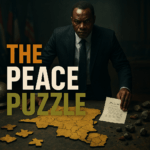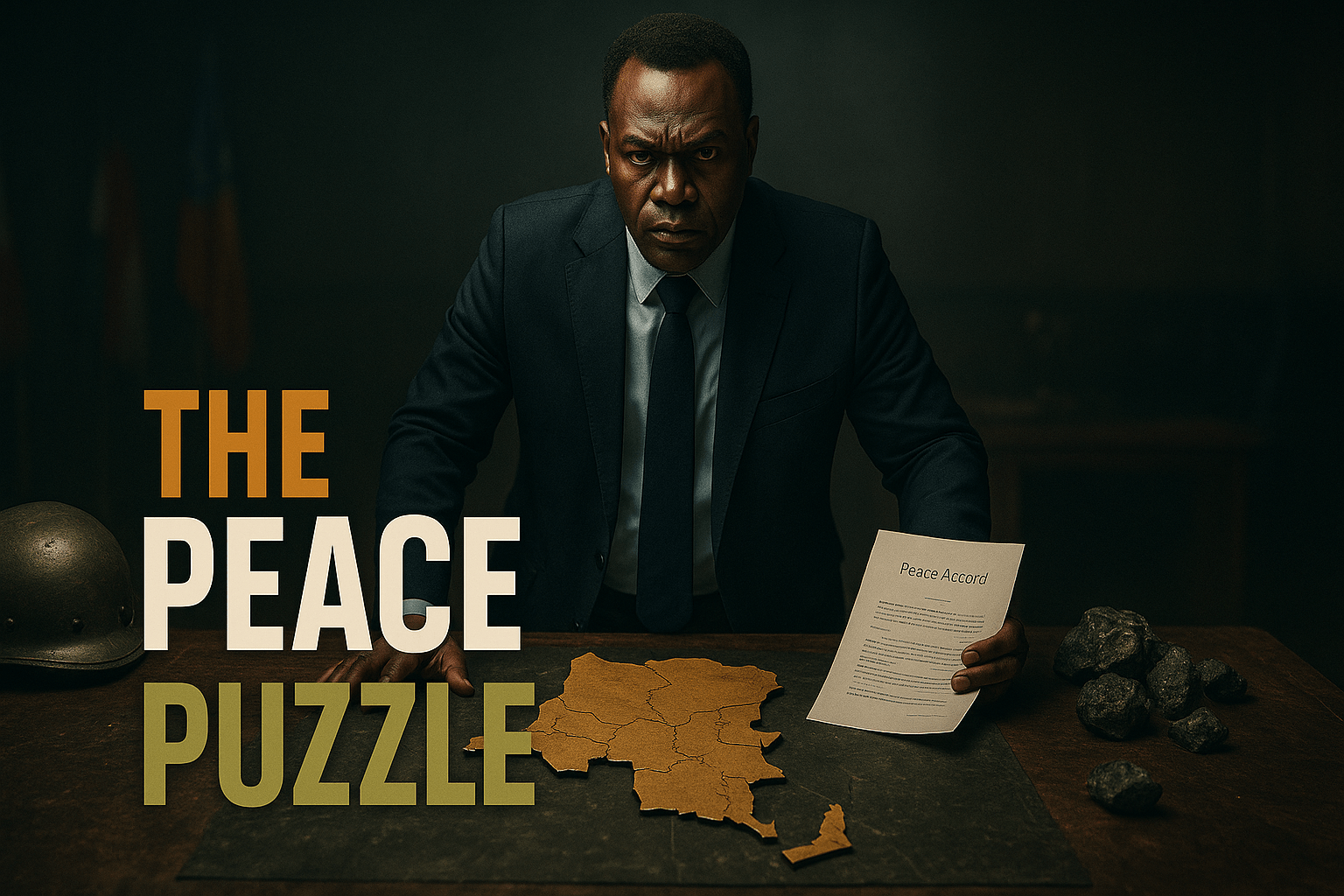

DRC’s Peace Puzzle: Unpacking the Conflict
By Darius Spearman (africanelements)
Support African Elements at patreon.com/africanelements and hear recent news in a single playlist. Additionally, you can gain early access to ad-free video content.
DRC Peace Efforts and Ongoing Violence
The Democratic Republic of Congo (DRC) and the M23 rebels recently signed a declaration of peace in Doha, Qatar, on July 19, 2025 (UPI.com). This declaration aims to end nearly four years of fighting and follows a broader peace agreement between the DRC and Rwanda. The signing in Doha occurred three weeks after the DRC and Rwanda signed a separate peace agreement in Washington, D.C., on June 27, 2025 (UPI.com). This earlier agreement did not directly involve the M23 rebels.
The peace agreement between the DRC and Rwanda, signed in Washington, D.C., aimed to address 30 years of conflict between the two nations (UPI.com). Despite these diplomatic efforts, violence continues in eastern DRC, particularly in North and South Kivu provinces, where the M23 armed group launched an offensive in January 2025 (news.un.org). The security situation in Eastern DRC remains highly volatile, with continued fighting involving non-state armed groups and clashes between the Congolese armed forces, their allies, and the M23 movement (reliefweb.int).
M23 Rebels: Who Are They?
The M23 is a rebel group operating in the eastern Democratic Republic of Congo (DRC). They are a significant non-state armed group whose actions have provoked the current crisis in the region (usip.org). Rwanda has been accused of providing direct military support, including troops and weapons, to M23, despite denials from Kigali (csis.org). The M23 group itself has not yet signed on to any peace agreement with the DRC government (usip.org).
Even without Rwandan patronage, the M23 is capable of funding themselves through illicit means (usip.org). M23’s role in provoking the current crisis makes their inclusion essential for peace (usip.org). M23 is currently negotiating with the DRC government in a separate mediation process led by Qatar (amnesty.org).
The Washington Accord and Doha Mediation
The Washington Agreement refers to the peace deal signed between the Democratic Republic of the Congo (DRC) and the Republic of Rwanda, facilitated by the U.S. (state.gov). This agreement aims to end state support to non-state armed groups and promote an enduring end to conflict (state.gov). It specifically calls for the parties to support ongoing negotiations between the DRC and the AFC/M23 under the mediation of Qatar (state.gov).
However, M23 itself stated that the Washington agreement did not concern them (foreignpolicy.com). Within just 48 hours of the Washington agreement being signed, M23 launched new territorial offensives in eastern Congo (foreignpolicy.com). The “Doha” context refers to Qatar’s mediation efforts for ongoing negotiations between the DRC government and the M23 rebel group (state.gov). Qatar continues to work to bring about a cease-fire between M23 and the DRC government, which will be essential to peace (usip.org).
Historical Roots of Conflict
The conflict between the DRC and Rwanda has deep historical roots, fueled by regional power struggles, historical grievances, poor governance, land and citizenship disputes, and competition for resources (csis.org). Rwanda has a long history of supporting armed groups in the eastern DRC, including the Rassemblement congolais pour la démocratie (RCD), Congrès national pour la défense du peuple (CNDP), and now the second iteration of M23 (csis.org). This support has contributed to a proliferation of armed groups and ongoing violence in the region.
The recent peace agreements aim to address this long-standing conflict, but concerns remain about whether they will genuinely tackle the root causes and ensure accountability for past crimes (amnesty.org). The people of eastern Congo have had their hopes for justice and security raised and then dashed by the signing and failure of numerous peace agreements over the last 25 years (amnesty.org).
Non-State Armed Groups and Their Impact
Beyond M23, other non-state armed groups, such as the Wazalendo, are active in the eastern DRC (amnesty.org). The peace agreement between the DRC and Rwanda specifically calls for efforts to disarm and demobilize non-state armed groups (state.gov). It also mandates the immediate and unconditional cessation of state support to them (state.gov).
However, the agreement has been criticized for not addressing impunity for serious crimes committed by these groups, which is a long-standing driver of the conflict (amnesty.org). Both M23 and Wazalendo groups are urged to prioritize civilian protection, as civilians continue to suffer at their hands (amnesty.org).
Humanitarian Crisis and Human Rights
The security situation in Eastern DRC remains highly volatile despite diplomatic efforts, with ongoing conflict and humanitarian concerns (reliefweb.int). On April 25, 2025, the governments of the DRC and Rwanda signed a Declaration of Principles aimed at promoting a peaceful resolution to the ongoing conflict (reliefweb.int). Despite these efforts, the UN Human Rights Office (OHCHR) has reported an “apparent total disregard for the protection of civilians during and after military operations” in the DRC (news.un.org).
Human rights violations, including sexual and gender-based violence, are a significant concern in the conflict-affected regions of the DRC (news.un.org). In North and South Kivu, nearly 40% of survivors of sexual and gender-based violence are children (news.un.org). UNICEF estimated that during the most intense phase of the conflict, a child was raped every 30 minutes (news.un.org).
Human Rights Violations in Eastern DRC
Critical Minerals and Geopolitical Interests
The United States has an interest in the DRC’s critical mineral reserves, which are used in high-tech devices and weapons (UPI.com). Komanda, in DR Congo’s Ituri province, is mineral-rich (UPI.com). The United States is seeking to gain access to these critical minerals (UPI.com). While mineral wealth is a driver of the conflict, it is not the root cause of the violence (csis.org).
The geopolitical importance of these minerals adds another layer of complexity to the ongoing conflict. The pursuit of these resources by various international actors can inadvertently fuel instability and prolong the suffering of the local population. Therefore, any lasting peace agreement must address the equitable distribution of mineral wealth and ensure that it benefits the Congolese people.
DRC’s Mineral Wealth
The Democratic Republic of Congo is rich in critical minerals, which are essential for high-tech devices and weapons. The presence of these valuable resources, particularly in areas like Komanda, contributes to the ongoing conflict as various actors seek control and access.
Enforcement and Accountability Challenges
The peace agreement between the DRC and Rwanda emphasizes compliance with international humanitarian law and calls for efforts to disarm and demobilize non-state armed groups (state.gov). However, the specific mechanisms for monitoring and enforcing the ceasefire and peace agreements are not clearly outlined in the available information. Concerns have been raised about the lack of accountability for serious crimes, which could undermine enforcement (amnesty.org).
There is a call for tangible consequences if Rwanda fails to withdraw its troops and end support to M23 within the three-month deadline set forth in the agreement (foreignpolicy.com). This suggests that existing oversight and sanctions mechanisms could be activated with political will (foreignpolicy.com). The future political or military role of M23 post-agreement is largely open-ended. While the peace agreement between the DRC and Rwanda calls for the disarmament and demobilization of non-state armed groups, M23 itself has not signed onto this agreement and has even launched new offensives after its signing (usip.org).
Regional Dynamics and International Involvement
The Southern African Development Community (SADC) began a phased withdrawal of its forces from Eastern DRC on April 29, 2025, following the end of its mandate (reliefweb.int). This withdrawal may affect the security environment in North Kivu, where civilians remain vulnerable (reliefweb.int). Rwanda’s actions and interests significantly influence the conflict and peace process, given accusations of support for M23 (csis.org).
Beyond the U.S. and Qatar mediation, the roles of other international actors, such as the African Union and the United Nations, in supporting peace and security are crucial. Their continued engagement and pressure on all parties involved will be vital for achieving a lasting resolution. The international community must ensure that any peace deal genuinely addresses the root causes of the conflict and provides a path toward justice and stability for the Congolese people.
Key Peace Milestones in DRC
Declaration of Principles
DRC and Rwanda signed a Declaration of Principles to promote peaceful conflict resolution.
Washington Peace Agreement
DRC and Rwanda signed a peace agreement in Washington, D.C., addressing 30 years of conflict.
Doha Peace Declaration
DRC and M23 rebels signed a declaration of peace in Doha, Qatar, aiming to end nearly four years of fighting.
The recent peace agreements between the DRC, Rwanda, and the M23 rebels represent significant diplomatic milestones. However, the ongoing violence, particularly in eastern DRC, underscores the fragility of these agreements. The complex interplay of historical grievances, the presence of numerous armed groups, human rights abuses, and geopolitical interests in critical minerals continues to fuel instability. For a lasting peace to take root, there must be robust enforcement mechanisms, accountability for past crimes, and a genuine commitment from all parties to prioritize the well-being of the Congolese people. The international community, including the United States, has a crucial role to play in supporting these efforts and ensuring that the pursuit of peace is not overshadowed by other interests.
ABOUT THE AUTHOR
Darius Spearman has been a professor of Black Studies at San Diego City College since 2007. He is the author of several books, including Between The Color Lines: A History of African Americans on the California Frontier Through 1890. You can visit Darius online at africanelements.org.
